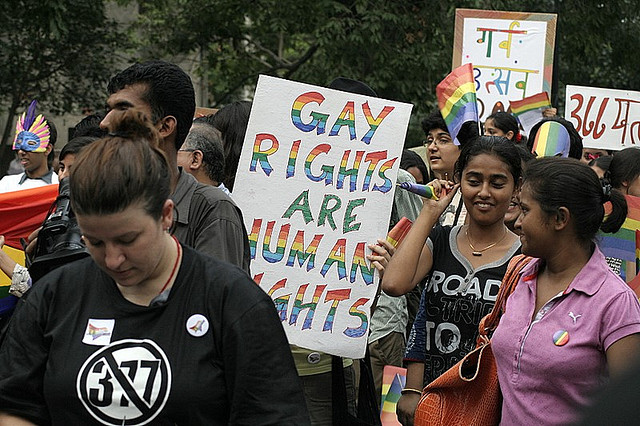By Supriya Ambwani
Last year, United Nations Secretary General Ban Ki-Moon decided to legitimise same-sex unions among UN staff regardless of their nationalities. However, last month, Russia led a vote against this move and India, along with Saudi Arabia, China, and Syria, supported Russia. Although they were outvoted and the UN staff managed to retain its rights, India’s support for the Russian motion shocked many people. Both the Indian media and activists censured the government for its homophobic move.
How did Indian society, which traditionally celebrates sexuality, turn so blatantly prudish? How did homosexuality come to be seen as something unnatural – or worse, a crime? Many blame it on a British colonial-era law which criminalised homosexuality in British India. The true story, of course, is more complex than that and difficult to analyse. I will instead focus on India’s anti-homosexuality laws, notably Section 377 of the Indian Penal Code which was enacted in 1860 by the British colonial government and stated:
“Whoever voluntarily has carnal intercourse against the order of nature with any man, woman or animal, shall be punished with imprisonment for life, or with imprisonment of either description for term which may extend to ten years, and shall also be liable to fine.”
In this case, ‘against the order of nature’ refers to both homosexual acts and bestiality. This law thus effectively grouped consensual same-sex relationships with forced human-animal intercourse.
Of course, despite the administration’s best attempts, homosexuality obviously did not disappear from India. In the 1990s many activists, including anti-AIDS crusaders, sought an end to this ban through social and legal means. In 2001, the Naz Foundation, an NGO which fights against the spread of HIV/AIDS, filed a Public Interest Litigation in the Delhi High Court against Section 377. Eight years later, the Delhi High Court ruled that Section 377 was unconstitutional as it violated citizens’ rights to ‘inclusiveness’.
The decriminalisation of homosexuality was a massive victory for India’s constitutional Right to Equality. It helped organisations that tried to control HIV/AIDS and allowed same-sex couples to live without fear of the law. Countless people came out publicly as homosexual with the approval of their families.
Unfortunately, a lot of people – in particular self-proclaimed religious groups – continued to believe that homosexuality was against Indian culture and that it was corrupting the society’s value system. Enraged by the court’s decision to uphold secularism and fundamental rights, they filed counter petitions to the Supreme Court of India.
However, the authorities, just like the rest of us, are often ignorant. Justice Singhvi, one of the judges who was in charge of enacting the new judgement, announced that he had never met a gay person. He remarked that the number of gay people in India was ‘fortunately’ lower than that in America, and made many other such homophobic comments,
Based on this, it’s not surprising that the Supreme Court decided to uphold Section 377 in 2013, reversing the High Court’s decision. Washing their hands of the situation, the judges decided to leave the final decision of amending the law to the Parliament.
The judgement was greeted with an outbreak of protests. The media condemned the move whilst anti- HIV/AIDS activists voiced their dismay. The LGBTQ community was shattered. Fortunately, in 2013, after four years of activism, homosexuality was already an open topic in India. The movement has grown too much to be subdued and forced back into hiding. Heterosexual people joined the protests for the decriminalisation of homosexuality and parents fought for their children’s rights. Political leaders spoke out against the move. Dozens of large brands joined the campaign against Section 377. Vikram Seth, a celebrated author, appeared on the cover of India Today magazine to protest against the criminalisation of his sexuality.
It’s still illegal to be gay in India but society has undergone great changes. Homosexuality, just like heterosexuality, is now a part of the public discourse and countless people continue to ‘come out of the closet’ every year. Yes, Section 377 has dealt a massive blow to fundamental rights and healthcare. No, the state shouldn’t police sexuality. But then again, this is 2015. Common people have more means of raising their voices than ever before and the fight for fairness gathers momentum every day. Freedom and equality seem achievable in time.
That’s why, in light of closer ties between India and France, and the Indian Prime Minister’s recent visit, we must emphasize the fact that we will no longer stand for discrimination in any form anywhere in the world. We want everybody to have the fundamental Right to Equality. After all, we are the world’s largest democracy.
Featured Image Credit: Ramesh Lalwani, Flickr CC. License available here.
